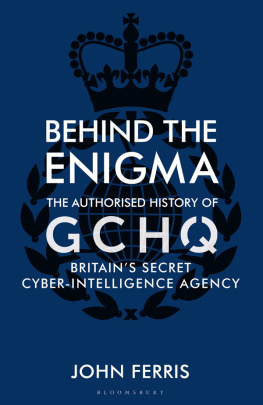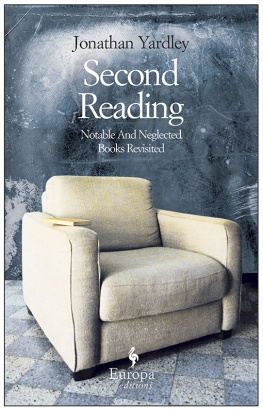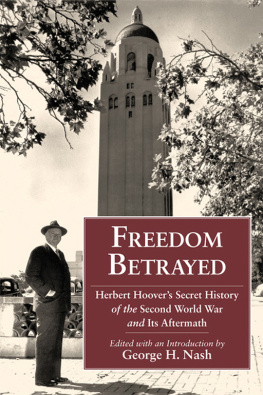THE
AMERICAN
BLACK
CHAMBER
This book has been brought to publication
with the generous assistance of Marguerite and Gerry Lenfest.

Herbert O. Yardley
Outside of State Department Code Room
THE
AMERICAN
BLACK
CHAMBER
HERBERT O. YARDLEY

BLUEJACKET BOOKS
Naval Institute Press
Annapolis, Maryland
This book has been brought to publication by the generous assistance of Marguerite and Gerry Lenfest.
Naval Institute Press
291 Wood Road
Annapolis, MD 21402
1931 by Herbert O. Yardley
All rights reserved. No part of this book may be reproduced or utilized in any form or by any means, electronic or mechanical, including photocopying and recording, or by any information storage and retrieval system, without permission in writing from the publisher.
Library of Congress Cataloging-in-Publication Data
Yardley, Herbert O. (Herbert Osborn), 1899-1958.
The American black chamber / by Herbert O. Yardley.
p. cm. (Bluejacket books)
Originally published: Indianapolis: Bobbs-Merrill, 1931.
ISBN 978-1-61251-282-2
1. United States. War Dept. Military Intelligence Division. Section No. 8History. 2. World War, 1914-1918Secret serviceUnited States. 3. World War, 1914-1918Military intelligence. 4. Cryptography. I. Title. II. Series.
D639.S7Y3 2004
940.548673dc22
2004042696
First Bluejacket books paperback printing 2004
TO
The Personnel of MI-8 and The American Black Chamber
and to
Our Skilful Antagonists,
The Foreign Cryptographers,
Who still remain behind the Curtain of Secret Diplomacy
CONTENTS
CHAPTER
ILLUSTRATIONS
FOREWORD
IN THE written history of the world there is not so much as a glimpse behind the heavy curtains that enshroud the background of secret diplomacy. The background? The Black Chamber. The Cryptographic Bureau, where specialists pore over cipher telegrams of foreign governments, where chemists forge diplomatic seals and photograph letters of foreign plenipotentiaries.
It is my aim to unfold in a simple dispassionate way the intimate details of a secret organization that I fostered for the American Government; an organization which, at its height of power, employed one hundred and sixty-five men and women. I created the bureau and directed its mysterious activities, until, at the end of twelve years, a new Secretary of State ordered the door of the Black Chamber closed and bolted.
In a period of twelve years, this Secretary was the first diplomatist who, though well aware that all great powers have their Black Chambers, had the courageor was it navet?to announce that diplomatic correspondence must be inviolate, thus renouncing the secret practises of the American Cryptographic Bureau. Now that the Black Chamber has been destroyed there is no valid reason for withholding its secrets.
We shall hear the words of England, France, the Vatican, Japan, Mexico, Cuba, Spain, Nicaragua, Peru, Brazil and many others.
We see the safe of a Minister opened, his code book photographed.
A lovely girl dances with a Secretary of an Embassy. She flatters him. They become confidential. He is indiscreetwe learn the nature of his code book.
A diplomatic seal is carefully forged. Experts skilfully open the letter and photograph the contents.
Months of labor to decipher another code. Fifty typists feverishly type elaborate frequency tables over which cryptographers strain their eyes for a key that will unravel the mystery.
A letter intercepted. Chemists at work with glass tubes and strange chemicals. Faint characters appear, a sentence... a paragraph... then anotherdesigns on the Panama Canal! A beautiful woman arrested and cast into prison. She confesses and dies.
A jumble of letters; they are deciphered. A secret trial and sentence of death.
A sensational telegram. The Attorney-General and the Secretary of State stumble over each other to be the first to reach the Presidentlike school-children running to their teacher with an apple to bribe her favors.
The first Armament Conference is in session. Here will be determined the naval strengths of the Great Powers. Couriers rush from the Black Chamber to Washington, carrying decipherments of the latest secret code telegrams of foreign governments. The Black Chamber is closely guarded. We are showered with honors. The Secretary of War pins the Distinguished Service Medal on my lapel and winks at me.
THE
AMERICAN
BLACK
CHAMBER
The American Black Chamber
THE secret activities of the American Black Chamber, which I directed, ceased in 1929, sixteen years after I arrived at the Department of State as a young telegraph operator. At that time I knew exactly nothing about the solution of the diplomatic codes and ciphers of foreign nations. No one else in this country knew much.
Washington in 1913 seemed a quiet prosaic city, but I was soon to learn that the Code Room held pages of history rivaling the great intrigues of the past. This spacious room with its high ceiling overlooked the southern White House grounds. By lifting my eyes from my work I could see a tennis game in progress where a few years earlier President Roosevelt and his tennis Cabinet had played each day.
Along one side of the room ran a long oak telegraph table with its stuttering resonators and sounders; cabinets containing copies of current telegrams almost blocked the entrance. In the center sprawled two enormous flat-topped desks shoved together, about which a few code clerks thumbed code books and scribbled rapidly, pausing now and then to light cigarettes. The pounding of typewriters specially constructed to make fifteen copies of a telegram mingled with the muffled click of the telegraph instruments. The walls were covered with old-fashioned closed cupboards filled with bound copies of telegrams from and to consular and diplomatic posts throughout the world. In the corner stood a huge safe, its thick doors slightly ajar.
There was an air of good-fellowship in the room and I was soon at home. However, I was mystified at the casual attitudes of these overworked code clerks. Daily history passed through their hands in one long stream and they thought less of it than of the baseball scores. The murder of Madero, the shelling of Vera Cruz, the rumblings of a threatening World Warthese merely meant more telegrams, longer hoursnothing else.
But when I was shifted to night duty I found myself in a different atmosphere. Minor officials and sometimes the Secretary himself made the Code Room a loafing-place. Many officials, including members of our diplomatic corps, the specialists on South American, European, Near Eastern and Ear Eastern affairs, often dropped in to look over the telegrams, and now and then, when wine had flowed freely at some diplomatic function, to argue for hours about the Secretarys damn fool policies. One in particular, the hardest-drinking but the shrewdest of the lot, always came in to read the latest dispatches from Mexico City before going home. Having finished, he never failed, in his solemn way, to ask me whether a certain word was spelled with a









